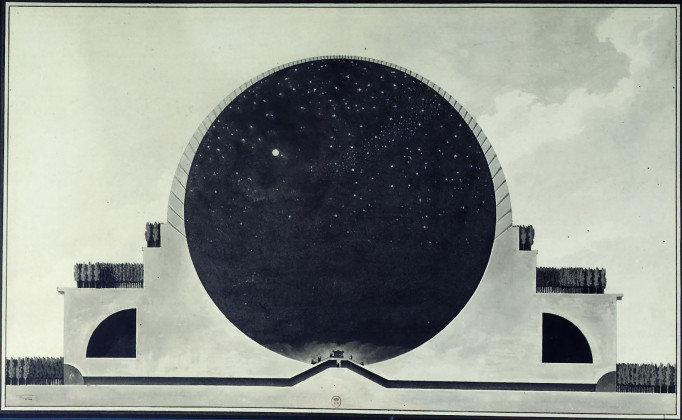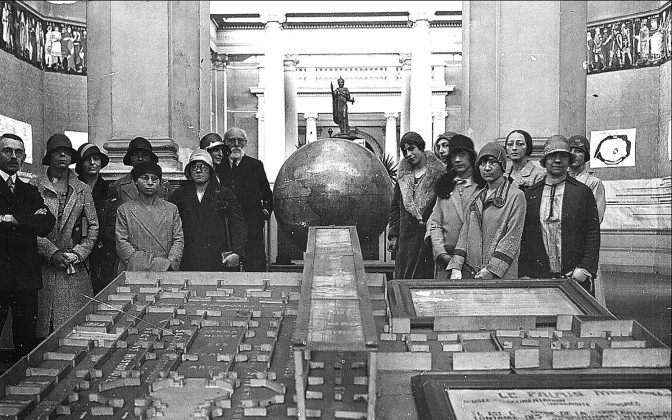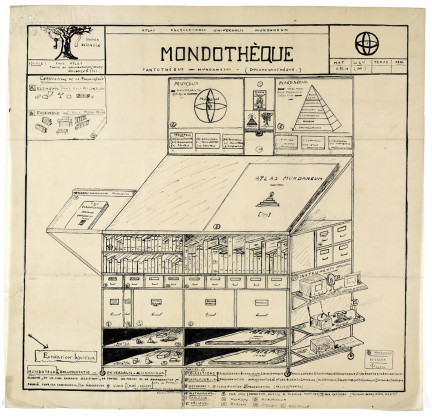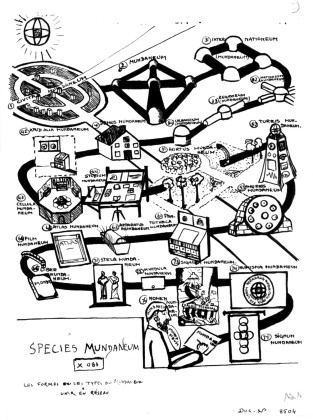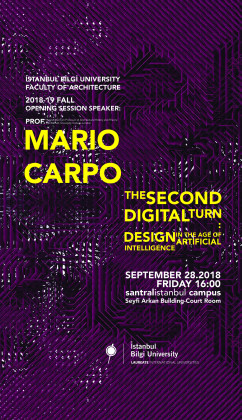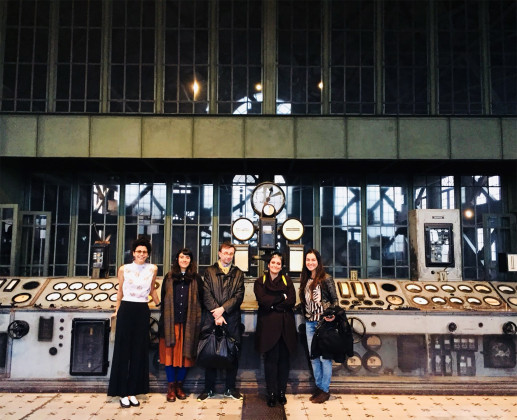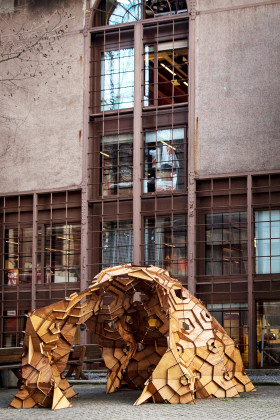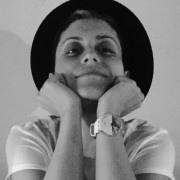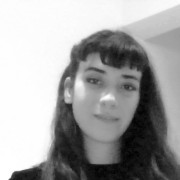Design Education in the Age of Artificial Intelligence
Bilge Bal and Bahar Avanoğlu talked with Mario Carpo on the first year design studios as the foundation of architectural education and the role of computational design tools in the field.
Bilge Bal, Bahar Avanoğlu: Our very first question would be on education, particularly on the first-year basic design studio in our university. It is called “Computation Based Basic Design Studio”.1 You might be already familiar with the university acceptance processes in Turkey, but just to give you a very brief insight: Unlike the schools in the US, the students in Turkey, upon finishing high-school, all take a general test. All the application to architecture faculties in Turkey also happen through this general system without any requirements of any portfolio or any letter of interest or any personal background, but just their success in the test and high-school performances.
Mario Carpo: There is no selection based on a portfolio?
BB, BA: No. There is no selection by schools in general. The students take an exam and answer questions predominantly on mathematics, geometry and natural sciences including biology, chemistry and physics.
MC: So the choice of the candidates for a school of architecture is based on mathematical skills?
BB, BA: Mathematical and natural sciences skills are important. The schools do not really choose the students; the students apply. The general education system distributes them according to their test scores, high school grades and choices as well.
MC: No evaluation of design skills? It is quite interesting. Which in a way makes sense because nobody teaches design in high school. Many years ago, I was in this selection committee for the candidates in the first year for a French school of architecture and they have introduced the same criteria of choosing based on portfolio. The students coming out of a French high school have never studied design, so we received only portfolios from the students whose families were architects, showing some architectural inclination. If in high school you don’t have art and architecture, how can you make a portfolio of architecture at the age of 18? So it makes sense that the application is based on the subjects you have studied. In high school, you do not study design, so you cannot run the candidates based on design skills, because there is no design expertise on which you test them. But in Turkey, if they choose art history, probably mathematics does not matter, does it?
BB, BA: Their education is dominated by literature and social sciences including history, geography and philosophy, etc. Actually, in high school, the students choose different branches like foreign language, letters or mathematics and natural sciences. For instance, if you decide to go with letters, then you take courses in this direction. There is an orientation. So for architecture, too. Architecture is a part of engineering in Turkey.
MC: Of a polytechnic system. The idea is that the student who goes to a school of architecture should be good at mathematics, but it is quite interesting then because we don’t use mathematics directly in practice. So your first-year students are good with numbers.
BB, BA: Yes, they are. However, mathematics is not enough for each department, for example interior design and maybe industrial design as well. There are some schools that take students with special talent exams. As we point out here, there are of course some exceptions, but generally, we can say that architecture is considered as a part of engineering school. Coming back to our topic, our first question would be on our first-year design studio which was developed and initiated by our current Head of Architecture Department Şebnem Yalinay Çinici and Onur Yüce Gün. It has been conducted since 2009 by a group of team expert professionals and young academicians. As we said before, it is called "Computation Based Basic Design Studio". In the framework of the studio, computation technologies and means are taken rather than just being tools, they inhabit a quite capable design logic that requires an alteration of settled education habits and pedagogies. The curriculum is built on the idea of computation as a way of design thinking and reasoning. It is intensively based on hands-on making with the aid of digital interfaces.
MC: This is a general studio of the first year?
BB, BA: Yes, it is.
MC: For all? They all take computation based design studio in their first year?
BB, BA: Yes, all of the students who enter our faculty take this studio. Every school has different approaches for the first year design studio, of course. Therefore, the first year students at each architecture school come from a variety of backgrounds and expectations on architecture, from students who don’t have any clue on what architecture is, to quiet interested ones. Our approach to the problem of introducing students into the field of architecture and design happens through the computation context in the studio. We have also other courses to support the computation based basic design.
MC: Geometry?
BB, BA: Yes, architectural geometry is one of them. The architectural geometry class is focused on using digital interfaces.
MC: Descriptive geometry?
BB, BA: We cover descriptive geometry through digital interfaces as we mentioned. However, in the first year, there is an architectural drawing class where they start learning to draw through traditional methods by using T-square, set squares, rulers, pencils, etc. Orthogonal projection, parallel projection and perspective as well… It is a drawing class where we teach all drawing notations and constructions.
MC: Good. Without that, you cannot use computer-aided design because you do not know what a computer is doing.
BB, BA: So just by decomposing the title (Computation Based Basic Design Studio), we actually do not deny the inheritance that comes from Bauhaus. Intensively interconnected with the nature of the things, the questions of material, technologies and their close/far environment etc. As the schools could be the perfect laboratory to experiment the next step, perhaps, what do you think of this computation based first year design studio and also what could be the questions of the first year design studio in general? What could it be called in the future?
MC: Well, the first year is always an introduction to design. The students who choose design don’t know what it is. It is a blank choice we make. They don’t know what they are getting into unless their fathers are architects. Typically for many students in architecture, it is a family tradition, so they know. Are you engaged in the first year?
BB, BA: Yes, we have been teaching in the studio for about three years. Then, what do you think about the integration of computation technologies to a first year design studio or the Bauhaus tradition?
MC: That is interesting because, at The Bartlett, University College of London, the first year is a general studio where all students make stuff with their hands. They make handkerchief, bricolage, masks, etc. I would not know about more specific design matters, as I do not teach design. However to speak very generally, the sooner it starts computational tool the better. However, in my perception which may be biased … because first I studied in the traditional way; then, I built an additional layer when computational tool came on top of that. When I started descriptive geometry which was useful for architectural drawing, computers did not exist. My point of view is that it is necessary to have some foundations of drawing because, with descriptive geometry, you can understand what computers do. If you give the computer rendering to students who have no understanding of a principle of geometric projections, they will never understand what the computers are doing. Perhaps, it is not necessary to spend on descriptive geometry as much time as we did, because back then it was really a tool of our daily life. I think it is important to have the foundation of projective geometry before starting to use computational tools so that you understand the logic of them is still the same. To understand photography, you need to know perspective; and to understand a rendering, you need to know projections. So A cannot be replaced with B; B can be built on the top of A.
BB, BA: Could they be parallel processes as well? Because more or less, we try to teach them as parallel processes. MC: That is what you do here?
BB, BA: Yes, it is. We have geometry classes through digital interfaces and also architectural drawing through traditional methods. They start to work hands-on and 1/1 making in the studio at the same time. Representation is something deliberately avoided to think on in the studio. We try to look at the materials, designs as they are.
MC: Well, when I was in my first year of the school of architecture in Florence, a long time ago. The first year we did many drawings, but one exercise was making a big model. We were asked to build a structure with sticks and ropes. Maybe, the stick was the idea of the beam and the compression and the rope of a tensile structure. But there was no explanation of material principles because it was pure learning by doing. I remembered that when we had to do it, I was very upset because I am not good at making stuff with my hands. And so, now I could rationalize why our professor obliged us to do that exercise. I almost killed myself because we had to make a lot of manual artifacts and since injuring myself, cutting fingers. I ended up in the hospital a couple of times. (I exaggerate a bit). But the argument which I could rationalize many years later is that architecture is an art of notation. It is based not on making stuff, but on making notations which we give to makers and builders who make a building happen. We are not makers of buildings, we are makers of drawings. The drawings become a building. This is the tradition of architectural design.
BB, BA: As Robin Evans says in his book Translations from Drawing to Building?2
MC: Yes, he does. By historically speaking, the profession of the architect was born in Renaissance when the humanists said we should not make buildings as craftsmen, we should make clean drawings. You make the drawings. You do not go to the site. You give the drawing to the builders and the builders make the building happen. We do not make buildings, we make drawings of buildings, notations, technical instructions which at some point in somebody else’s hand become a physical object. In what sense what you are doing in the first year would be wrong according to the argument of separation which was valid 40 or 50 years ago. But with today's digital tools the separation between notation and fabrication doesn’t exist anymore. With digital tools, you can notate, design and make with the same interface, with the same machine, on the same desk. You can see it on the screen and the print it out. As a result, the ideal separation between ideas in the mind, notations on paper and building in concrete or plaster or brick, which Robin Evans explains as the translation of drawing into a building and the ideological core of architectural profession from Renaissance was valid until 20 years ago. They are all kept together in the digital domain because through the digital tools, the separation is technically abolished. The drawing becomes an object without having to be given to a contractor or you can do it yourself for a little scale object of design. Of course, you cannot print out a skyscraper yet. Not all by yourself, not all alone. If you want to build a skyscraper, you still have to go with the traditional method. Nevertheless, the separation does not conceptually exist anymore. So in a sense, the idea of learning by making or by doing is valid as you integrate craft and computation. It is the spirit of the time. So this would have been wrong 50 years ago. Why were they obliging us to make physical stuff? Our job is a notational job. We are trained to make drawings. There are several layers of translation. Firstly, there is an idea. The idea must become a drawing which is already materialization. And the drawing must be a physical object which is two levels, two degrees of separation. Today, the first degree of separation is between the idea and the screen and it still exists. The second is between the screen and the physical object. But if you are making a teapot or a glass, the separation already has been abolished by technology. So in a sense, what you are doing which would be wrong one generation ago is right today. Possibly, possibly…
BB, BA: We want to ask about notation as well. What about the question of the collage? Drawing is notational whereas collage is probably not. In some other texts, you mention that collage is a “romantic and worrying” attempt within digital architectural discourse.
MC: You read the recent article on Metropolis, right?
BB, BA: Yes, we read Post-Digital "Quitters": Why the Shift Toward Collage Is Worrying3 and we wish to discuss it. Perhaps we can observe that collage technique’s general framework was in a vital position throughout the history such as from monsters to collage cities, marking sometimes refraction points but today maybe not so much. MC: Well, collage is, it was important through all the twentieth century. There is modernist collage and there is post-modernist collage. In my opinion, collage is a more modernist technique than a post-modernist technique. Historically, collage is cut and paste, something you do with photography. So it’s a modernist technique, by definition. In real, original post-modernism, collage was not such an important component. But the problem is that post-digital guys are recycling collage in a way which is a technical abomination because if you use photoshop, you don’t do cut and paste. Cut and paste is a physical activity that you do with scissors and paper, whereas if you use photoshop, you know, morphing is the next level of collage; you merge and you morph. You don’t cut and paste. It’s a merging, not a collaging. So the idea of recycling collage in a photoshop environment is a technical absurdity--a mistake. Now, if you are aware of that, you can make a theoretical argument out of it, which would be perfectly legitimate. Collage is a mechanical activity which is cut and paste. With the digital, this mechanical attitude does not exist anymore. With the digital, it is all about smooth transformation, merging and morphing. So, collage is dead in the digital domain, but re-interpreting and creating a new theory of merging things together could be an interesting point. How do we do it in the computational domain? We have a strategy: Taking the computational environment as the technical tool with which you may want to practice the merging of different parts and see what that is through smooth transformation, not through cut and paste, that would be an interesting assignment. Perhaps, I should write for something for Metropolis on this subject.
BB, BA: Maybe, there is still a possibility to overcome the nostalgia of collage today, then. If we would see it as a nostalgia today? MC: It shouldn’t be called collage, it should be called collage 2.0. In fact, the idea of merging and morphing, using a computational tool, is perfectly legitimate. Someone should elaborate the theory and the technology and the strategy to do it. Collage doesn’t work because if you are doing a collage, you don’t need digital tools. You can do it, just as I did it as a child, by cutting and pasting. Why would I need a computer to do that? So build a studio on the digital collage; not the post-digital collage but the digital collage.
BB, BA: It could be perfect to think on it because the point you mentioned makes the present moment unique for challenging architecture related to the digital turns as well. We could try it in the studio. We also have a few words with the universal language. upon a reference to your discussion on the library. We mean the sorting-coding system in your lecture yesterday. In relation to John Wilkins’ analytical language, a language similar to a decimal system. How would you reflect the nature of sort and search to the project of universal language? MC: Universal language?
BB, BA: The one that is since the legend of Babel Tower, also when we think about architectural notation, architectural syntax…
MC: I know nothing about universal languages, but Umberto Eco wrote a book on universal languages.4 In the 17th century, Leibniz tried to write a universal language, it was based on mathematics, but before Leibniz, another crazy baroque Czech mathematician called Jan Amos Komenský. He devoted his whole life to the idea of writing a universal notational language based on the combination of numbers. Of course, it never worked… But are you familiar with something called the universal system of decimal classification? UDC? There is a little note on that my book, The Second Digital Turn: Design In The Age Of Artifical Intelligence.5 It is a system of universal classification of everything, invented by a crazy Belgian called Paul Otlet. Otlet was aware of different systems for librarian classifications, the UDC system was already in use. He wanted to invent a more general system of classification for everything. He obtained huge funding, I don’t know. The project was known in architectural history because, at some point, Le Corbusier worked for him. He wanted to build a general building, a palace of knowledge called Mundaneum and Le Corbusier offered some ideas. Of course, it was never built. But now Google has created a museum devoted to this guy, Paul Otlet. A museum to the universal science of classification; nonsensical, as from the point of view of its normal user, which we all are, Google does not really deal with classification systems any longer. They don’t sort, they search. A footnote: the Google search machine, in fact, does a lot of classification we don’t see, because they couldn’t scan the whole world wide web. Every time you do search, so in reality, we think, and we like to think that it is pure search, but it is built upon an extremely sophisticated system of invisible classification, which are short-cuts for Google to find, to subdivide the universal category world wide web, which is copied anew at regular intervals. In fact, they use very advanced classification. So we shouldn’t apply my theory of search don’t sort, to the google search machine in general because it is still impossible to search the whole world wide web every time anew. They have short-cuts. However, if you do a search on our Gmail account, that is pure search. If you look for a search, for example, if you search for the term “john” (as each letter is an octet, of eight 0 and 1), it will scan your entire archive looking for thirty-two 0 and 1 sequence. When the machine finds that sequence it stops and that’s it. It is pure search without any hierarchical classification. Simple searches work like that. When they are searching the whole world wide web, they could do it, but it would take forever. So they don’t.
BB, BA: Perhaps, we encounter, books of education of an architect in every architectural era. Is such “an education of an architect” as a book possible today? Perhaps assuming that it is or not, what would it be within this discourse or why would it not be? MC: Education of an architect… Well, since there are schools of architecture, we still presume that there is something we have to teach. Every era of architectural education, every two years, someone comes up with a new proposal. We don’t have certainties upon which to build the education of the architect. If we are training physicians, medical doctors or engineers, there are pillars of the education of an engineer which are non-controversial, everyone has to learn that. In design, there are no certainties. There is a consensus at certain points but make some disciplines more important less important but everything is authoritarian to some extent ideological. Even the idea that an architect should be good in mathematics… It was evidently a consensus when someone made the legislation that you are applying. When they were deciding, they ask themselves what should an architect do? Build. Well, then, he or she, at the time, he, would know about mathematics. Probably that was the case 70 years ago when they made those regulations. But today, that regulation doesn’t apply anymore. Now, I wouldn’t know what an encyclopedia of the architect should be today.
BB, BA: Also related to our discussion on the universal language, how would we be speaking of universal education? MC: As you certainly know, even the notion that you should teach a systematic approach to the history of architecture is controversial, because if I teach, in a western European school of architecture, the western canon, it starts in Greece, from… Vitruvius to Zaha Hadid, from Vitruvius to Peter Eisenman. But this is the western canon. It may explain what happens in New York or in London, but it doesn’t explain what happens here for example. I remember once I was teaching the western canon, mandatory by law in a French school of architecture in Paris, in France as you probably know a large part of the population is Muslim. But in all schools I know -or I knew back then- the mandatory classes were Architecture History I and Architecture History II. Architecture History I was the western canon, from Greece to the industrial revolution. And Architecture History II was from the industrial revolution to the Bauhaus. I was teaching the history I and one day a group of students came and told me: “Professor Carpo, why do you always teach us about churches and you never teach about mosques?” I said, well, “I don’t teach about synagogues either. I am obliged by the school's syllabus to teach you only the history of churches because here you must be training in the western canon, and Europe mostly built churches, until very recently. But if you think of a traditional survey architectural history in a western school from Vitruvius to Peter Eisenman… Do you know the practical joke in a school of political sciences? It has been going for sometime, the introduction to the history of western political thought, is called form Plato to NATO. It is a joke. Because it is the history of western political thought which also brings with it the ideological justification of the supremacy of the West, starting with the Greek all the way to NATO. And it gives you an idea that the west is dominating the world because it has the advantage of this philosophical tradition behind it. The ideology hidden in this commonplace is that this western tradition is superior to all others, witness of the fact that NATO is now the most powerful military alliance in the world. So if you teach Vitruvius to Peter Eisenman, you are to some extent, playing the same game. It is one canon, which brings embedded into it, the presupposition the ideological idea of the superiority of one tradition to all others. Which if you consider the history of colonialism is justified because that tradition was exported, but you cannot teach that today, because we don’t live in that world anymore. Do you still have a question?
BB, BA: We have. If you would write your own historiography, how would you do it? MC: Wait for my autobiography. When I am retired, I should write it.
BB, BA: And lastly, what is your motivation of research and also how do you position your motivation as an educator?
MC: Just to understand what’s happening and then, when I understood it, to tell the story to someone else. But they generally don’t believe me, so…
*with special thanks to İstanbul Bilgi University, Mario Carpo, Şebnem Yalınay Çinici, İdil Karababa and Ecem Ergin.
Professor Mario Carpo6 was invited to give an opening lecture by the Faculty of Architecture in İstanbul Bilgi University on 28th of September, 2018. The lecture focused on his last book "The Second Digital Turn: Design In The Age Of Artifical Intelligence".
NOTLAR:
1For more information about the studio, Computation Based Basic Design@BILGI, see: www.archindid.bilgi.edu.tr
2Evans, Robin, 1997, Translations from Drawing to Building and Other Essays, The MIT Press, Cambridge, Massachusetts.
3Carpo, Mario, “Post-Digital ‘Quitters’: Why the Shift Toward Collage Is Worrying” [online]. Available at: www.metropolismag.com/architecture/post-digital-collage [Accessed: 10 September, 2018].
4Eco, Umberto, 1995, The Search for the Perfect Language (The Making of Europe), Wiley-Blackwell, Cambridge, Massachusetts.
5Carpo, Mario, 2017, “2.2 Don’t Search: Search”, The Second Digital Turn, the MIT Press, Cambridge, Massachusetts, p. 28.
6Reyner Banham Professor of Architectural History and Theory, The Bartlett, University College London. www.ucl.ac.uk/bartlett/architecture/prof-mario-carpo
Related Content:
-
Augmenting Design: Space Layout Generation With AI
Thomas Takeuchi, an architect and the founder of Arqgen, was interviewed by Gözdenur Demir, about the use of AI in architectural design. Takeuchi discussed his enthusiasm for and practical knowledge of AI-based methods in architectural design. He also spoke about the founding of the startup company Arqgen, its activities, and current projects.
-

"UNFOLD" Organized by ATÖLYE and XXI Begins
-
How to Train Your Robot
Typical information flow from design to execution is taken granted as linear, rather one-directional.
-
Handmade Inspirations
The world agenda full of crises makes it necessary for architectural practice to take a new look at the built and natural environment, and to develop new perspectives
-
10 Tips For A Successful Architectural Design Studio
Has architectural education become such a know-how package that is transmitted through such documents only?
-
void main( )
A series of futuristic images, with the first series produced for the 1900 Exhibition Universelle in Paris, was depicting what it would be like to live in the then distant year of 2000 - aptly named En L’an 2000
-

Archive Dreaming
-
helloWorld
'Who are we as architects?' we found ourselves pondering, across a half-a-ton bright orange robotic arm looming over the very little space we have as our digital fabrication workshop
 18.04.2019
18.04.2019



